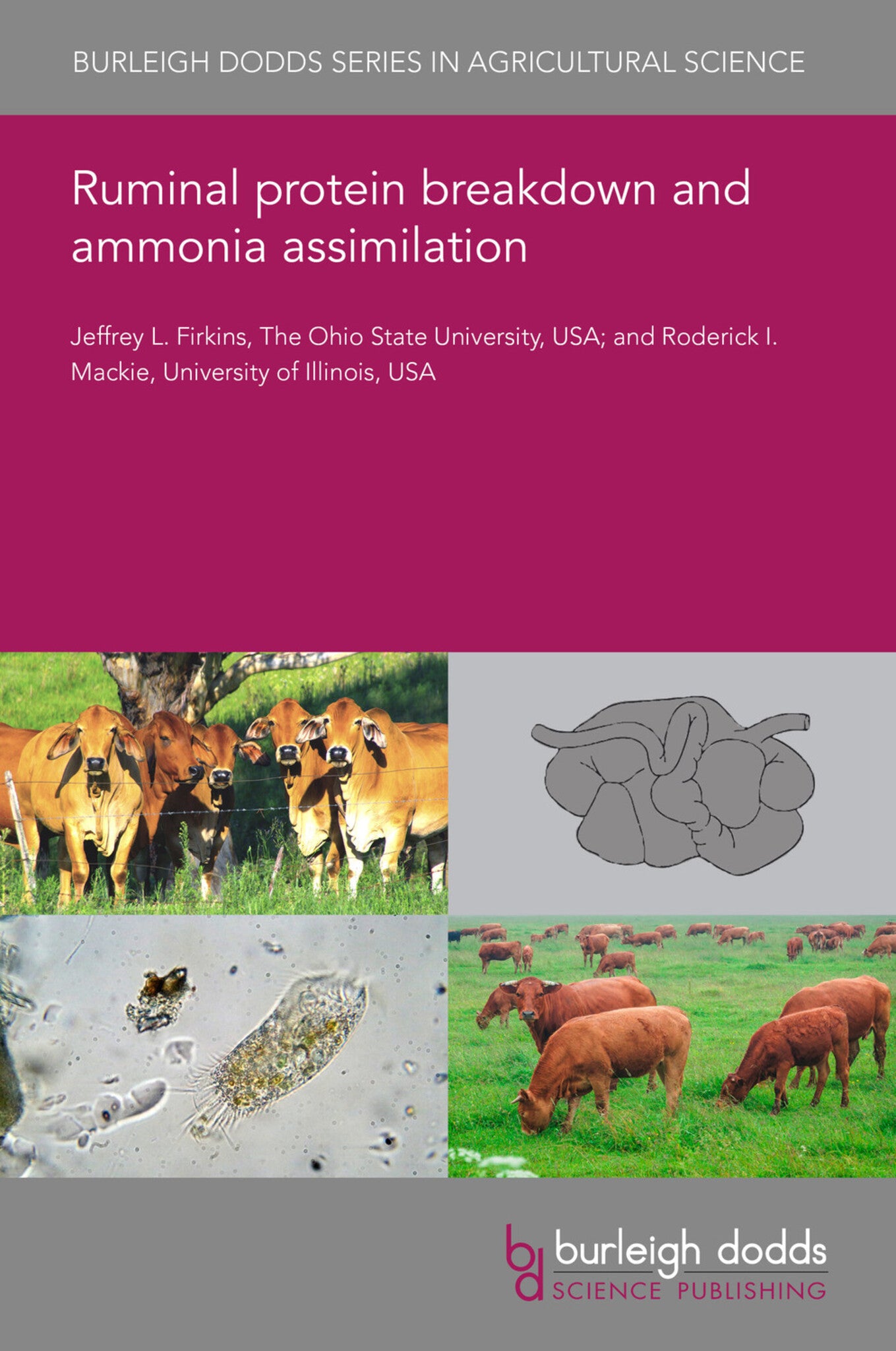We're sorry. An error has occurred
Please cancel or retry.
Ruminal protein breakdown and ammonia assimilation
Regular price
£25.00
Sale price
£25.00
Regular price
£0.00
Unit price
/
per
Sale
Sold out
Re-stocking soon
Ruminal nitrogen (N) metabolism has long been associated with adequate degradation of fiber, feed intake, and productivity by ruminants. To reduce environmental impact, minimizing N waste per N int...
Read More

Some error occured while loading the Quick View. Please close the Quick View and try reloading the page.
Couldn't load pickup availability
- Format:
-
22 June 2020

Ruminal nitrogen (N) metabolism has long been associated with adequate degradation of fiber, feed intake, and productivity by ruminants. To reduce environmental impact, minimizing N waste per N intake oversimplifies the issue. Instead, animal product per unit of dietary N should be optimized, thus emphasizing an efficient ruminal ecosystem. Results made available from emerging technologies applied to pure cultures of ruminal microbes have partially filled knowledge gaps that are reshaping our understanding of the process of ammonia assimilation and its regulation in the rumen. Key findings on bacterial and archaeal expression of ammonia assimilation enzymes are discussed. Proteolysis of feed protein and intra-ruminal recycling of microbial protein accentuates uncertainty in ruminal N metabolism and its integration into nutrition models. The important role of ruminal protozoa in excessive predation and inefficient usage of bacterial protein is emphasized, and research questions are posed to integrate microbial processes into future studies integrating ruminant nutrition and rumen microbiology.

Price: £25.00
Publisher: Burleigh Dodds Science Publishing
Imprint: Burleigh Dodds Science Publishing
Series: Burleigh Dodds Series in Agricultural Science
Publication Date:
22 June 2020
ISBN: 9781786768025
Format: eBook
BISACs:
TECHNOLOGY & ENGINEERING / Agriculture / Animal Husbandry, Dairy farming, TECHNOLOGY & ENGINEERING / Agriculture / Sustainable Agriculture, Sustainable agriculture, Animal husbandry

1 Introduction 2 Microbial nitrogen metabolism 3 Opportunities to improve efficiency of ruminal nitrogen (N) metabolism 4 Conclusion 5 Future trends 6 Where to look for further information 7 References



